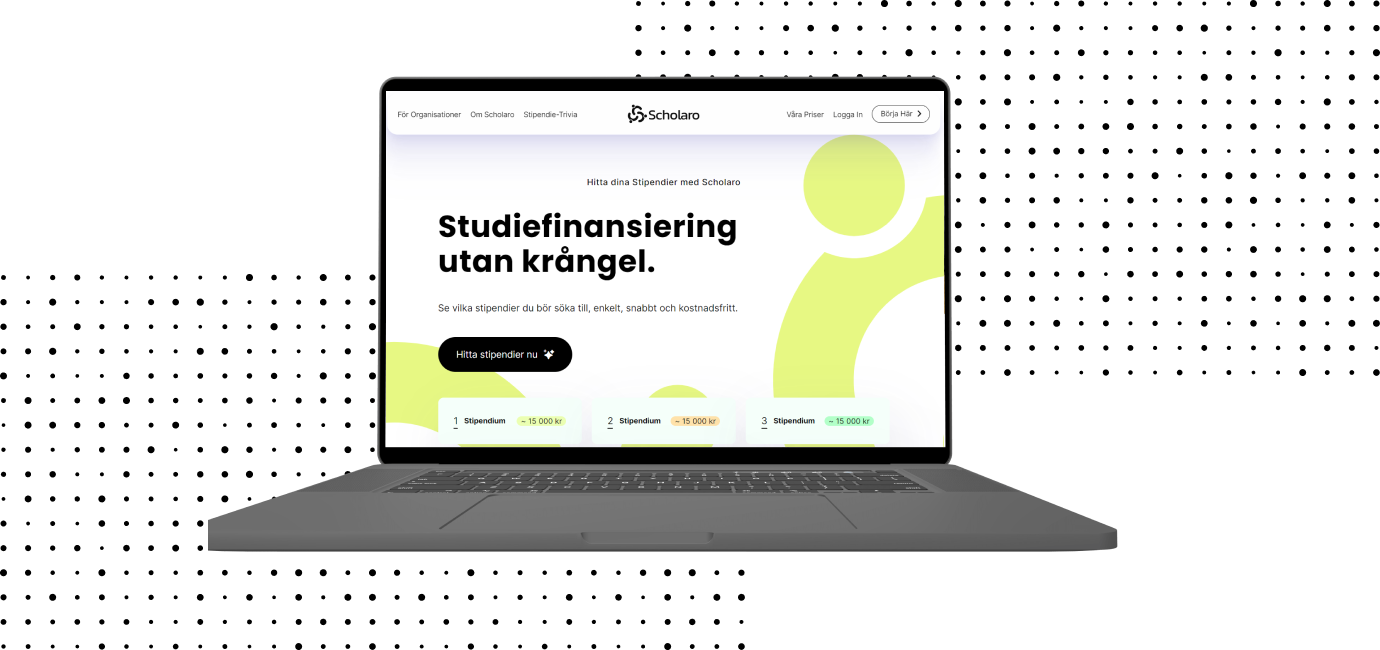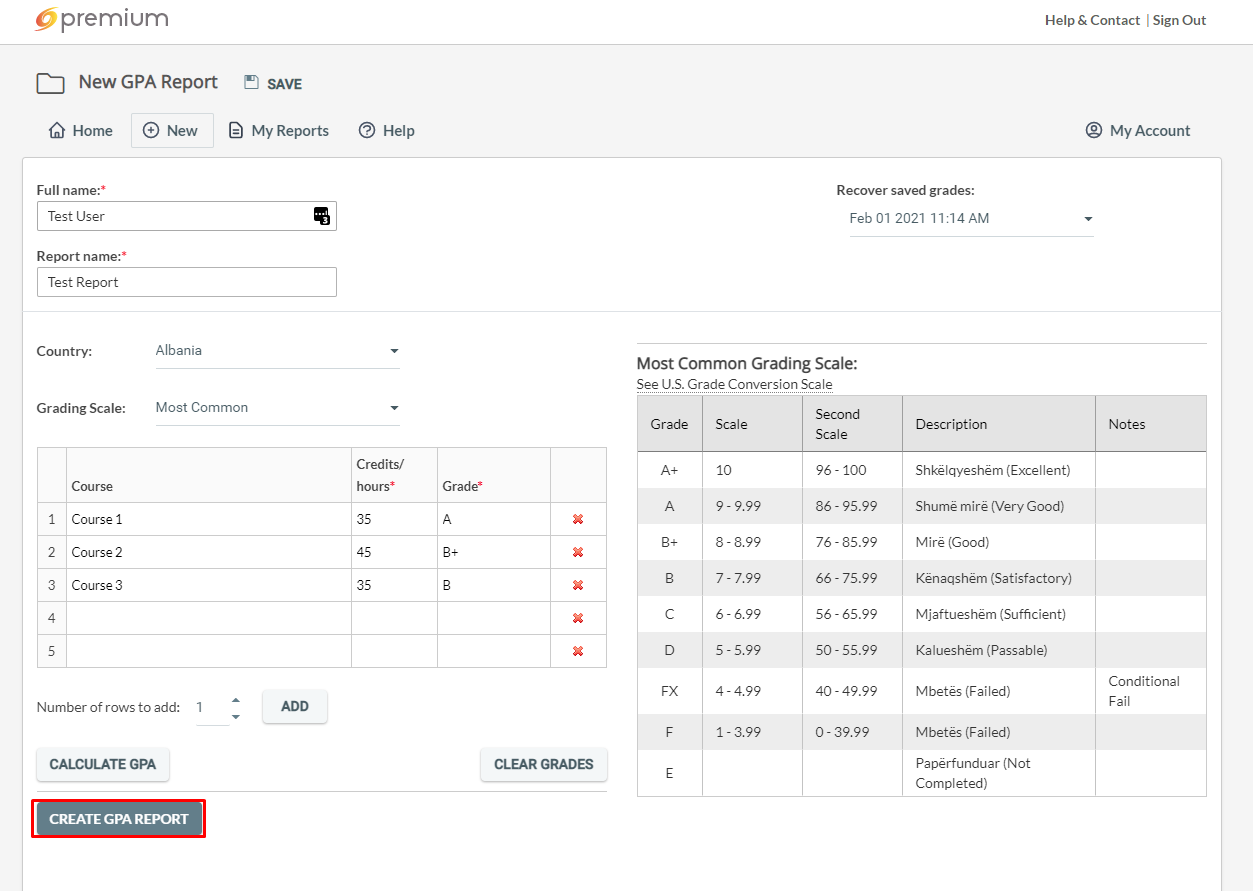Powering an AI scholarship coach with Bubble

Over the last few years, Scholaro had to be one of the more interesting projects we’ve come across.
Their mission is to help students find the best possible scholarships using an AI-powered matching algorithm. By subscribing to Scholaro, students can save hours upon hours of research time.
Scholaro’s co-founder, Henrik Tingström, needed a team to carry out his vision. His goal was to start with Sweden first, and then expand to the rest of the world. He needed assistance both with developing the AI, and creating the front-facing platform for the students.
When Henrik came across us at Tinkso, he knew he had the right builders to bring his product to market. Above all, he noted our enthusiasm for his idea as we gave him actionable product advice that could be applied universally, rather than giving overly-specific advice that he wouldn’t be able to apply outside our partnership.
Building the platform using Bubble, we had a working MVP in just a month. Here’s how we did it!
Behind the AI algorithm
First of all, let’s brief you a bit on how the AI we developed for Scholaro works.
Firstly, Scholaro scrapes scholarship data from various sources online, including municipal directories, non-governmental organizations, university websites, and more.
Then, once Scholaro receives data from the applicant, they connect to the Open AI assistant API to help find the best scholarships based on the data they scraped. Matching students with scholarships required us to optimize the semantic search and comb data from both the user profiles as well as the scholarships.
The AI gives students 5 scholarship options based on factors like location, field of study, and more. And for premium users, that figure goes up to 20.
Choosing Open AI wasn’t easy, we had to plan for the app to be robust enough that thousands of students could use it. At the same time, the API we used needed to be affordable enough to scale. After thorough research, the choice came down to Open AI vs. Pinecone, and Open AI won.
Bringing the AI scholarship coach to the students
With the AI scholarship engine in place, we needed to bring the “coaching” aspect to the users. That is, we needed to design an interface that was easy for users to understand.
To do this, we created a two-sided portal. On the one hand, we had the students, who needed to be onboarded and view their scholarship matches. On the other, we had admins who needed to view which scholarships were on offer and manage the student accounts when necessary.
So, we gave both categories of users their own dashboard. For students, the process was fairly simple. After completing an onboarding form where they reveal personal details like location, field of study, and more, the user is presented with a dashboard view. There, they can peruse scholarship matches and rate them on whether they’re applicable. They can also click on the scholarship matches to learn about them in more detail.
On the back end, the dashboard functions as a CRM for admins. Here, they can view information about students and scholarships.
Should any issues arise with a student account, they must contact the admins so that they can fix it. The admin can delete accounts, address scholarships that users mark “not applicable”, edit student information, and so on.
Finally, to keep admins up to date, we used a Postmark integration so that they would receive an email any time there was a user action that they needed to address.

MVP after 1 month
After conducting initial design sprints, we built the entire app using our openBuild framework for Bubble.
One of the most important things in our collaboration, according to Henrik, was the fact that he felt like he had a team of developers working on his project. It was great to have us handle the whole process so that he could focus on the landing page and marketing for Scholaro.
Our quick iteration enabled him to jump into the market immediately with an MVP. Since then, he’s been able to test all sorts of assumptions about the customer experience, gathering feedback from thousands of users.
Reception has been quite positive, consequently, Scholaro has received some initial funding. The only challenge for Henrik is that he has more applicants than the admins can physically handle. As such, they’ve introduced a waitlist for their premium plans.
The future of scholarships
The story certainly doesn’t end here. In fact, we’re continually collaborating with Scholaro to improve the platform.
As for the next steps, Scholaro is looking to expand its AI features to automatically generate scholarship applications based on student input. This could make the application process even faster than it was before. Later on, they’ll also add functionality to allow top talent to apply to internships, which would be a huge opportunity for businesses.
Without the help of our team and our quick development processes, Scholaro wouldn’t have been able to move this fast.
It proves that Bubble and No-Code empower you to seize opportunities quickly, especially in a fast-moving field like AI.
Working with Tinkso has been a key element in validating our product building. Their technical know-how and stack expertise, really fast-paced our dev time to a fraction of the time it would normally take. Especially a big thanks to Hortense and Bartek for good product lead.
Henrik Tingström
Founder, Scholaro
Overview
Scholaro wanted to develop an algorithm that matches students with the best-fit scholarship using AI. When they came to us, they needed us to create a platform for that algorithm so that students in Sweden, and eventually the rest of the world, could benefit from its matchmaking capabilities. Thanks to our team’s help, Scholaro now has thousands of users.
Sector
Technology
Integrations
Want to learn more?
Ready to Build What’s Missing?
Book a short call and let’s explore what we can create together. We’ll help you turn your idea or workflow challenge into a clear, actionable plan, fast.
Start My Project